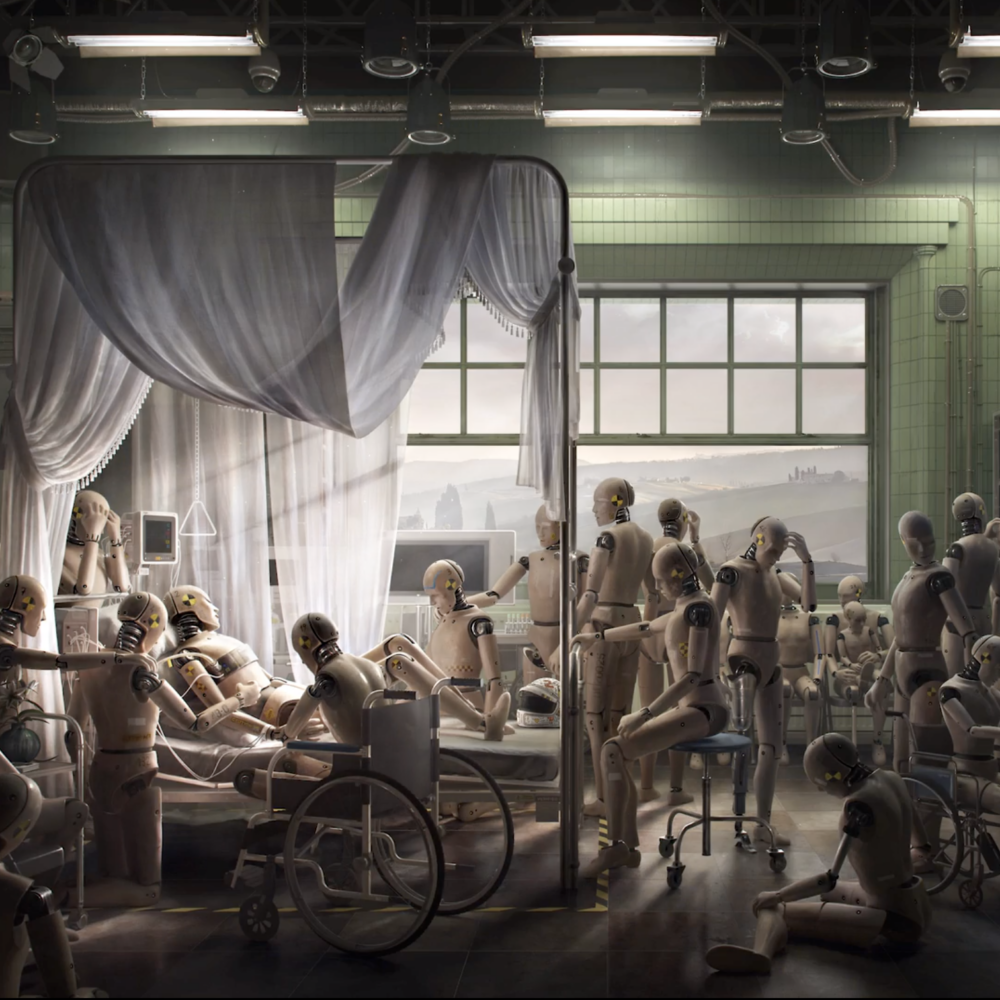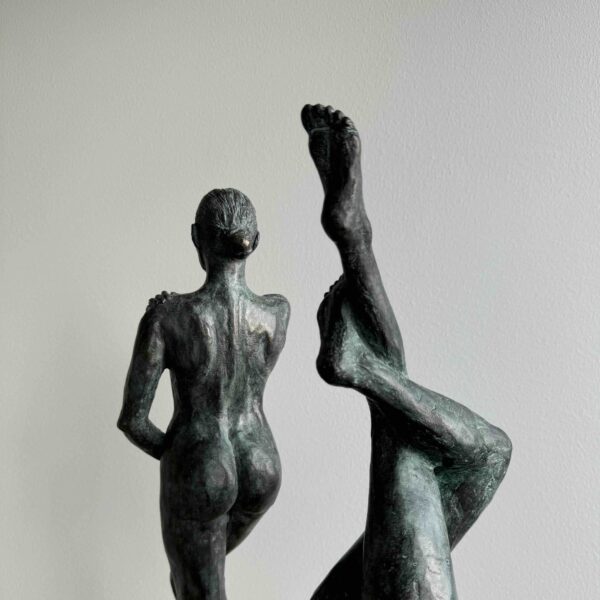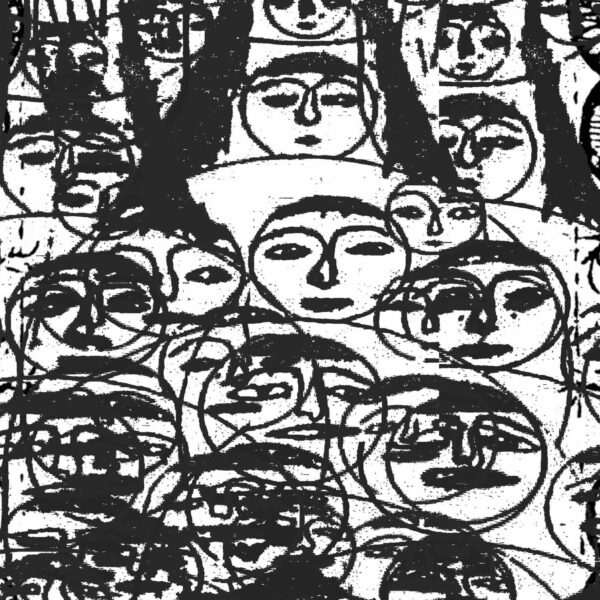Harmonizing Past and Future: A Journey through the Artistic Landscape of Vittorio Bonapace
Award-winning digital artist, scenographer, and art director Vittorio Bonapace sat down with us to discuss his unique and captivating style. Currently operating “Bonapace Studio” in London, he creates visually riveting work by mixing his incredible 3D art skills with live photography. In this interview, we dive into Bonapace’s love for beauty, music, and constant creation. Please note, this conversation has been edited for brevity and clarity.

Q: I’d love to hear about your beginnings as an artist. Was this a lifelong dream? Was this something you’ve gotten into more recently?
BONAPACE: Well, I had this little dream when I was younger to be an artist. I was always sketching and painting, and my parents decided to send me to the Academy of Fine Arts. I trained in stage design, production design, and scenography at the Academy of Fine Arts in Rome. After that, I worked at the Lyric Theater, one of the most iconic theaters in Italy. I worked there for around four years as a scenographer, and as a painter/artist. I was painting huge backdrop canvases, the ones you see in the theater when you see a show. It was like a dream come true. I grew up with music in my life as well, as my father was a musician. At times, I’ve been a musician too, playing different instruments. At a certain point, I started meshing all of my skills together and constantly making art and music. I have had several bands in the past. So I used to play music professionally, with rock bands and metal bands.
Q: Have you continued exploring your musical side? Do you ever combine that with your visual work?
BONAPACE: I try to include all my understanding of music and my composition skills into my visual art process. When I create a piece now, I develop for each artwork at least a couple of weeks while exploring it with sounds and music composition. For every artwork, I compose my own music. So, now music it’s part of my artistic career. Sometimes I design the music I create from scratch, sometimes I take a little bit online and then I manipulate it. But basically, it’s all my compositions. With the sound, I try to use it to reflect on myself. That’s why in all my artworks you can hear digital sounds as well as classical sounds. I try to bring my life inside my music.
Q: On that theme of digital and physical, during the height of a lot of mania in the metaverse, it felt like nearly everything was going digital. At the same time, some of the most special and sought after events were in-person, like NFT NYC or Art Basel. What was your experience like, with blending the physical and digital worlds?
BONAPACE: Even though I’ve been a supporter of all digital connections, I really love being face-to-face with people. That’s why I try to attend every single event, because you develop connections in a different way. I don’t really like the flip side of technology, where we don’t see each other physically. I really love events and connecting with people.
Q: For someone who’s less familiar with your story, can you tell us about the time you spent working in Rome, what you were doing, and what you learned?
BONAPACE: Yes, I worked with the Lyric Theater. I was a scenographer and the painter there. So, quite often I was able to sculpt and create– from sculpting stages for the shows, or painting on a big canvas, the background canvas for theater shows. I worked for years there assisting the main scenographers and directors. I think it was probably one of the best experiences I’ve had so far. It was all about tainting things, sculpting things, and all of the theater, lighting, and beauty around me. Being a scenographer is quite interesting work because you are surrounded by musicians, by the lyrics, by the singers. There’s a lot of heart behind it, a lot of emotion. So, I really enjoyed that period of my life. At a certain point, I was becoming more interested in the digital world. I slightly started moving into 3D and graphic software to bring all the classical things into more technological iterations.
Q: There’s a beautiful combination of a lot of different mediums in your work. Can you talk about what goes into your work? What is combined? What’s the process?
BONAPACE: When I design a new artwork now, I start from actually the scenography. In every artwork, there’s a little bit of scene creation first, so I design it. It can sometimes be a church, it can be a war shell, it can be any kind of very, very different environment. I always carry my scenography background into the artworks before developing the story, and find the message behind the artwork itself. I like to make something that is a little bit more original, and less obvious. So research, design and even atmosphere creation are very important to me- which I learned working in theaters, because I was surrounded by dust. When you are in the theater, you can feel the dust and all the lighting, which is quite interesting. I try to reflect that point into my artwork– the dust, lighting, and mood effects.
One of my points of interest has been facing the past and the future together.
Q: Looking at your work feels like wandering into an antique shop, while simultaneously sustaining a super futuristic vibe. What do they mean to you?
BONAPACE: One of my points of interest has been facing the past and the future together. I bring some classical visual elements from the past, while blending them with contemporary bits and contemporary elements. For example, in 2021, I made this crucifixion, which was originally classical artwork. I tried to bring all the classical history from the gospel, and blend them with crypto pans and a sort of sci-fi Netflix vibe. I always try to bridge the worlds. One world has the heritage we find in history as well as art history, and one is the world we are living in right now. Sometimes I blend techno sounds with more ancient values.
Q: Are you religious at all? I’m curious if you’re open to talking about that, based on the imagery you work with frequently.
BONAPACE: That’s a good question. My uncle is a priest, but I’m not religious. My work is more of a sociological study of religion. I grew up going to church with the Virgin Mary on the wall and with crosses around my uncle’s house. Many of us Italians and many of us who live close to Rome grow up this way–. with religion, with the Vatican, with the church. I’m not Catholic, I’m not fully into religion, but I was very interested in bringing some of the culture we have to the world.
I quit my other work and I made that jump into the dark.
Q: How did you get into NFTs?
BONAPACE: I got into NFTs because, for years, I was wondering how to sell digital art. I was thinking it would somehow be possible to sell digital art and not as a print, but as a proper valuable piece. Around 2012 I was traveling around, and I remember I saw some artistic digital artwork for sale somewhere. It made me think that hopefully in the future we would be able to sell digital art somehow. So when I saw NFTs popping up, I was very excited. Luckily I had all my social media well connected, and my portfolio and work posted on my social media. It was like having a package ready. I jumped on it immediately because this was something I was waiting for, for a long time. At that time I was producing digital art while also working as an art director for a couple companies, even one 3D architectural visualization and digital art firm. But, as soon as NFTs took off for me, I completely focused on myself as an artist. I quit my other work and I made that jump into the dark.
Q: Did you find from the beginning that the NFT space was welcoming to you? What was that experience like?
BONAPACE: At the beginning I remember I felt really alone in a way. I was trying to get in, but I had a limited foundation. I didn’t know who to talk to, how to understand if someone was ill intentioned or helpful, how to sell, how not to sell. I was jumping into this court, but I remember at the beginning, this court was a mess for me. I was floating into the ocean with no lights or no direction. For me, it’s always good to have strategy, plans, and direction. I did not have them at the time and I was feeling a bit lost. At the same time, I was willing to go ahead and try to make it somehow in this marketplace. So I kept going. I remember I was in London during that time, and I met a few artists. One was Andrea Chiampo, and we started to talk about having some of the same fears, same strategies, the dreams we had, and the things that were possible. We discussed the best way to talk with collectors, how to approach things, how to go up organically in price. All this made sense and made me realize, oh, God, we are a new generation of artists. So, it was a very comforting point of view, it was the beginning of championing the void for me.
Q: Your upcoming triptych, ‘La Divina Commedia: A Contemporary Journey,’ sounds fascinating, as it reinterprets Dante Alighieri’s timeless masterpiece. Could you elaborate more on what drew you to adapt this work and how you have given it a contemporary touch?
BONAPACE: I have always been captivated by the profound symbolism in Dante’s ‘La Divina Commedia,’ particularly the allegorical journey of the soul from sin to redemption. The idea of translating these complex narratives and emotions into a visual language was a challenge I wanted to undertake. I wanted to bring this classic to life in a way that resonates with the contemporary viewer. For instance, I incorporated the element of masks into the Inferno, reflecting our human tendency to conceal our flaws and past mistakes. As the journey progresses to Purgatory and then ascends to Paradiso, these masks are gradually discarded, mirroring the process of self-discovery and liberation from past transgressions, which is a theme that is very much relevant in our time.
Q: The transformation of the characters in your triptych, from hiding behind masks to completely shedding them, is a captivating element. Could you tell us more about this concept and how you believe it connects with the modern audience?
BONAPACE: The idea of the masks came to me as a reflection of how we often hide our true selves behind facades. It’s a behavior that seems ever more pronounced in our digital age, where online personas can sometimes bear little resemblance to our true selves. As the characters journey through Inferno to Purgatory, and finally to Paradiso, they shed these masks, representing a purification process, a confrontation of their true selves. In Paradiso, the absence of masks signifies complete liberation and acceptance of their true nature. I believe this resonates strongly with a modern audience, as it prompts us to reflect on our own lives, the masks we wear, and the liberating feeling when we finally take them off.


